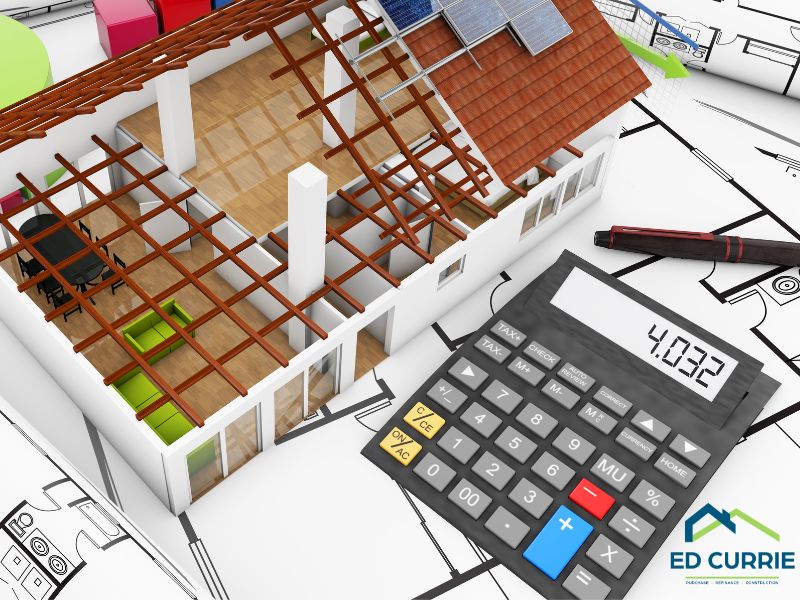 Planning the construction of your dream home is an exciting process, but determining how much to borrow can be challenging. Construction loans are designed to cover the costs of land and building, so careful planning is essential to ensure your loan fits both your needs and budget. At Ed Currie Mortgage, we’re here to guide you through the process. Here’s how to determine the right loan amount for your project.
Planning the construction of your dream home is an exciting process, but determining how much to borrow can be challenging. Construction loans are designed to cover the costs of land and building, so careful planning is essential to ensure your loan fits both your needs and budget. At Ed Currie Mortgage, we’re here to guide you through the process. Here’s how to determine the right loan amount for your project.
Start with a Conversation with Your Builder
The first step is discussing your project in detail with your builder. They will provide a breakdown of construction costs, including:
- Materials and labor
- Architectural and design fees
- Permits and inspections
- Landscaping and exterior work
These figures will give you a clear picture of the total cost of your new home construction. This breakdown will serve as the foundation for determining how much financing you’ll need.
Budget for Monthly Payments
Like a traditional mortgage, your construction loan will require monthly payments. During the construction phase, these payments typically cover the interest on the disbursed amount. Once construction is complete and the loan converts to a permanent mortgage, your payments will include both principal and interest.
To ensure affordability:
- Review your income and expenses to determine what monthly payment you can comfortably manage.
- Use an online mortgage calculator or consult with a loan officer to estimate your payments based on various loan amounts and interest rates.
Account for Additional Costs
Construction loans are tailored to cover land and construction costs but don’t include expenses such as rent or other living costs while your home is being built. Many borrowers rely on the proceeds from selling their current home to finance construction, which often allows for a larger down payment and reduces the overall loan amount.
However, if you’ve sold your current home, you’ll need to factor in additional expenses, including:
- Rent: Temporary housing costs while your home is being built.
- Storage: If you need to store belongings during construction.
- Utilities and Insurance: Costs associated with maintaining the construction site, such as temporary utilities or builder’s risk insurance.
Carefully budget for these expenses to avoid financial strain during the construction phase.
Consider Your Down Payment
The size of your down payment directly affects how much you need to borrow. Construction loans generally require larger down payments than standard mortgages, often ranging from 10% to 20% or more.
A larger down payment offers several advantages:
- It reduces your loan amount and monthly payments.
- It demonstrates to lenders that you’re financially invested in the project, potentially improving your loan terms.
- It increases your equity in the home once construction is complete.
If you’re using proceeds from the sale of your current home, work with a financial advisor or loan officer to determine how much you can allocate for your down payment while retaining enough funds for living expenses.
Work with a Loan Specialist
Construction loans have unique considerations compared to traditional mortgages. We can guide you through the process, helping you:
- Understand loan terms and repayment structures.
- Calculate how much you’ll need to borrow based on your project’s costs and your budget.
- Plan for contingencies, such as unexpected cost overruns or delays.
Our expertise can ensure your loan aligns with your financial situation and goals.
Determining how much to borrow for your construction loan involves more than just looking at the cost of your new home. By budgeting for living expenses, evaluating your financial situation, and consulting with Ed Currie Mortgage, you can make informed decisions and set yourself up for a successful home-building experience.
Contact Ed Currie Mortgage today to discuss how we can help you determine the right loan amount for your construction project and ensure a smooth path to your dream home.




![EdCurrie_Logo White[Transparent] EdCurrie_Logo White[Transparent]](https://edcurrie.com/wp-content/uploads/elementor/thumbs/EdCurrie_Logo-WhiteTransparent-qybu3sjgpfhje9098uitv7fpt7os2hgn52gfy6ocx4.png)